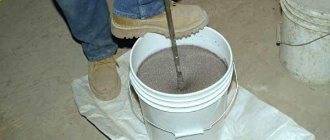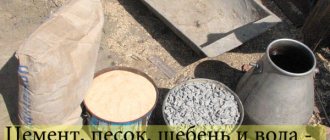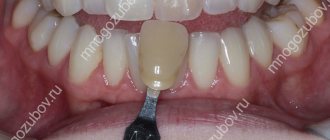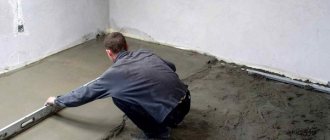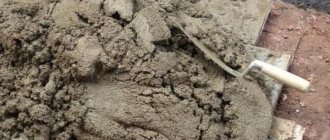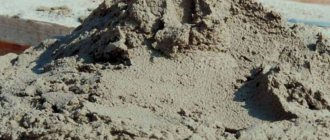Description
Non-shrinkage, high-strength thixotropic repair mixture Consolit bars 113 is a multicomponent composition of special cements, fractionated fillers (maximum fraction 3.2 mm), reinforcing fibers and a complex of modifying additives.
After mixing with water, a ready-to-use, non-shrinking repair mixture is obtained with high adhesion to the substrate and high final strength (> 80 MPa after 28 days).
Thixotropic properties (ketchup consistency) allow it to be successfully used for repairing vertical, inclined and ceiling surfaces, preventing slipping.
The minimum layer thickness is determined by the fractional composition of the filler and is 12-15 mm.
Areas of application for the fast-hardening repair mixture Consolit bars 113
Dry high-strength repair mixture CONSOLIT BARS 113 is recommended for use in industrial and civil construction for structural repairs (class R4) with damage depths from 15 mm to 40 mm
Main areas of application of dry repair mixture Consolit bars 113
- repair of industrial floors, walls, equipment foundations in indoor and outdoor areas exposed to heavy mechanical loads, exposure to aggressive environments containing sulfates, sulfides, chlorides, deicing agents, mineral oils, lubricants, etc.;
- repair of spans and bridge coverings, concrete coverings of parking areas in all climatic zones with high mechanical loads;
- repair of concrete and reinforced concrete structures operating in sea and fresh water conditions;
- repair of reinforced concrete supports subject to high static and dynamic loads;
- when monolithic, rigid connection of prefabricated concrete structures;
- when strengthening cracked rocks, installing anchors;
- when strengthening bases and foundations.
Guidelines for the use of rapid-hardening concrete mixtures CONSOLIT BARS
1. General Provisions
This manual applies to the repair of cement concrete, reinforced concrete and reinforced concrete (hereinafter referred to as concrete) pavements of highways and airfields, building structures and structures with quick-hardening concrete mixtures "CONSOLIT BARS", produced according to TU 5745 - 002 - 54793637 - 05 and establishes the requirements to the preparation of concrete surfaces, rules for production and control of repair work.
2. Terms and definitions
The following terms and definitions are used in this manual:
Crushed stone of the first group (cuboid-shaped grains) is crushed stone with a content of lamellar (flaky) and needle-shaped grains of no more than 15% by weight. Lamellar (flaky) and needle-shaped grains also include grains whose thickness or width is three or more times less than their length.
Crushed stone fraction is crushed stone with a certain grain size (from 3 (5) to 10; from 10 to 15; from 15 to 20 mm, etc.) separated from the total mass of stone material during screening.
Cast concrete mixture is a ready-to-use mobile concrete mixture that provides a cone settlement of more than 20 cm and does not require compaction during installation.
Thixotropic concrete mixture is a ready-to-use mobile concrete mixture that provides a cone settlement within 11-16 cm and is capable of maintaining a given shape or profile and does not require compaction during installation.
The rough surface of the repaired area is the surface of a coating or a separate area, formed by evenly alternating protrusions of skeletal particles and depressions between them, as well as the own roughness of crushed stone or specially created grooves on the surface of the coating.
Dry concrete mixtures are a rationally selected composition based on special cement, dry inert aggregates, chemical additives and polymer or metal fibers.
Ready-to-use concrete mixtures are dry concrete mixtures mixed with water in an amount that ensures the necessary workability and production of concrete with the specified physical and mechanical properties.
CONSOLIT BARS is a ready-to-use, quick-hardening dry concrete mixture in the form of a gray powder containing grains of coarse inert aggregate. When mixed with water, it forms a rheoplastic or cast concrete mixture, ready for use, that does not separate and maintains workability for at least 60 minutes for class B30 and B60 and 15 minutes for class B 45.
3. Recommended application
3.1. Concrete mixtures "CONSOLIT BARS", depending on the required time frame for completing the work, can provide a strength gain of over 30 MPa at the age of 24 hours for a mixture of class B60 and 20 MPa at the age of 3 hours for a mixture of class B 45. The minimum thickness of the laid layer for mixtures of classes B60 and B45 (aggregate size up to 3.2 mm) must be at least 40 mm, taking into account reinforcement,
and with a thickness of more than 50 mm, it is allowed to add up to 40% of fractionated crushed stone of the first group to mixtures of classes B45 and B60 when performing work on repairing road surfaces and installing or repairing floors.
3.2. Concrete mixtures "CONSOLIT BARS" are recommended for use:
— for repair of road surfaces and airfield runways, spans and bridge surfaces, parking area surfaces in all climatic zones;
— for repairs and installation of floors in rooms and open areas with heavy mechanical loads and aggressive environments containing mineral oils, lubricants, etc.;
— for repair of building elements (reinforced or prestressed beams under static or dynamic loads, ceilings, bridge elements, etc.);
— for repair of structures operating in marine or water conditions;
— to protect concrete from aggressive waters containing sulfates, sulfides, chlorides, etc.;
— for repairing elements subject to repeated loads;
— for rigid connection of prefabricated concrete structures;
— for strengthening rocks, installing anchors;
— for repair of supports subject to high static and dynamic loads;
— to strengthen foundations and foundations;
— for spot filling under equipment;
— repair of chimneys running on gas fuel, cooling towers.
In any other cases and under problematic conditions of use, it is recommended to seek advice from the specialists of Consolit LLC.
4. Preparing the concrete surface for repair
4.1. Before laying the finished concrete mixture, the concrete surface must be cleaned of destroyed concrete and cement laitance or concrete cutting products. The method for removing destroyed concrete and cleaning the surface must ensure the removal of destroyed concrete until a peel strength of at least 1.5 MPa is achieved. Methods for preparing concrete for repair are given in the Instructions for preparing concrete and reinforced concrete surfaces for repair. The depth of the repaired areas should be such that the layer of concrete mixture has a minimum thickness of 20mm. The surface prepared for repair must be rough with alternating protrusions and depressions of at least 3 mm in height.
The edges along the contour of the defective areas must be cut vertically to a depth of at least 20 mm. The concrete surface must be free of oil, grease or paint stains, lime, dust and other contaminants.
4.2. Preparation and installation of fittings.
The fittings in places of damage must be cleaned of rust.
When laying “CONSOLIT BARS” mixtures on areas of more than 0.25 m2 and there is no reinforcement cage, reinforcement mesh must be laid in places of damage and secured with anchors to the existing concrete mass. The pitch of the anchors should not exceed 250 mm, the cell size of the reinforcing mesh is taken from 50 x 50 mm, the diameter of the reinforcement is taken from 5 mm or more depending on the depth of destruction and with the expectation that the minimum gap between the reinforcing mesh and the bottom of the treated concrete should be about 10 mm, and the layer of concrete mixture above the reinforcing mesh must be at least 20mm.
4.3. Anchors are fastened with quick-hardening artificial resins or special solutions based on expanding cement.
4.4. After installing the reinforcement and hardening the composition for fastening the anchors, the area to be repaired is pre-wetted generously with water. Excess water is removed with a clean rag or blowing with compressed air. In this case, the compressor must be equipped with an oil separator.
5. Preparation of ready-to-use concrete mixture.
5.1. To prepare a concrete mixture ready for use, it is necessary to perform the following technological operations:
- check the availability at the work site of the required amount of dry concrete mixture “CONSOLIT BARS” to carry out repair work, taking into account that to obtain one cubic meter. ready-to-use concrete mixture requires approximately 1850 - 1950 kg of dry concrete mixture;
— check the availability of the required amount of water for mixing the dry concrete mixture and make sure that clean water is used for mixing;
— make sure that all the necessary equipment and tools for performing the work are at the work site (mixer or concrete mixer with forced mixing, carts, trowels, buckets, trowels, brushes and other tools);
— check the implementation of preliminary operations related to the preparation of the repaired area and formwork in accordance with the requirements of section 4;
— open the number of bags with dry concrete mixture required for work. "CONSOLIT BARS" shortly before mixing. One bag contains 30 +/- 0.3 kg of dry mixture. Pour the required amount of water into a mixer or concrete mixer; according to the water-solid ratio indicated on the label of each bag. The volume of the batch should not exceed the amount of ready-mixed concrete required for laying within 25 minutes for class B45 and 60 minutes for class B30 and B60;
— turn on the mixer or concrete mixer and quickly and continuously pour in the dry concrete mixture;
- after the calculated amount of dry concrete mixture has been poured, it is mixed with water for 3-4 minutes until the finished concrete mixture becomes homogeneous, without lumps, wait for 2 minutes and then mix again;
- if the required workability of the finished concrete mixture has not been achieved, you can additionally add mixing water in an amount of no more than 10% of the calculated amount, determined by the specified water-solid ratio. Water content may vary depending on ambient temperature and relative humidity. Hot, dry weather may require slightly more water than cold, damp weather.
5.2. It is not recommended to mix the CONSOLIT BARS ready-mix concrete manually, without the use of mixing mechanisms, in order to avoid introducing more water than required by the specifications or the specified water-solid ratio.
6. Laying ready-mixed concrete
6.1. Effect of temperature: ready-mixed concrete CONSOLIT BARS can be used at temperatures during laying (+5 /+ 30)°C. If the ambient temperature is within (+5/+10)°C, strength will increase more slowly. When high early strength is required, it is recommended:
— store bags with dry concrete mixture “CONSOLIT BARS” in a warm place;
— use hot water for mixing (+30/+50)°C;
- start installation work in the morning;
— protect the material during laying and hardening with insulating mats.
If the temperature of the ambient air is high; (more than +30°C), then the problem will be the loss of workability time of the finished concrete mixture. When loss of workability significantly affects the production process and quality of work, the following precautions must be taken:
— store bags of dry concrete mixture “CONSOLIT BARS” in a cool place;
- use cold water for mixing or add crushed ice to the water;
— prepare and apply ready-mixed concrete in the coolest time of day. If it is necessary to perform work using CONSOLIT BARS concrete mixtures in conditions of negative temperatures, the requirements of this section must be met and, in addition, the surface of the freshly laid mixture must be covered with heating mats that ensure a temperature on the surface of at least +15°C.
6.2. The finished concrete mixture can be either sprayed, poured into the defective area, or laid with a trowel. Filling is used when performing work on horizontal surfaces and with a slight slope (no more than 4%). Pouring the finished concrete mixture should be done continuously, without vibration, only on one side of the defective area to prevent air from entering and the formation of holes and cavities in the mixture. Pouring ready-mixed concrete from two opposite sides is not allowed.
Spraying should generally be used when repairing vertical, ceiling and sloped surfaces. Spray filling should be done under pressure using special equipment that ensures the mixture is supplied to the work site under pressure and excludes the entry of air into the mixture or with a concrete pump.
Throwing with a trowel should be done for small jobs, for example, when repairing small sinks or small chips, as well as when applying to inclined or vertical surfaces. If the ready-made concrete mixture “CONSOLIT BARS” is poured into the formwork, it can be removed 16 - 24 hours (depending on the ambient temperature) after pouring or laying with a trowel for a mixture of class B60 and after 3 hours for a mixture of class B45.
6.4. Finishing the surface and giving the required profile to the finished concrete mixture is done with a wooden trowel immediately after application. If desired, a plastic or synthetic sponge trowel can be used to finish the surface in selected areas.
6.5. Roughness grooves can be applied to a leveled surface after the concrete mixture has set, i.e. when the fingers, when lightly pressed on the surface, do not sink, but only leave a mark.
6.6. When applying by spraying, the final finishing of the surface is carried out after the concrete mixture has set.
7. Care of the surface of the laid concrete mixture
7.1. Under any weather and climatic conditions, in order to ensure normal hardening conditions for the CONSOLIT BARS concrete mixture, appropriate wet holding and prevention of evaporation of mixing water from the mixture must be ensured.
Wet aging is carried out from the moment the setting begins and is ensured for at least 3 days using one of the following methods:
— protection of the surface from direct sunlight;
— application to the surface of film-forming materials that have the appropriate certificates or passports;
- covering with polyethylene or other polymer film with sealing around the entire perimeter of the repaired area;
- applying damp jute fabrics with periodic watering;
— applying a layer of sand or sawdust 2-3 cm thick to the surface of “CONSOLIT BARS” with periodic moistening with water;
— periodic wetting of the surface with finely sprayed water.
7.2. Wet curing for the first 24 hours is the most important operation to ensure normal curing and the expanding action of the concrete shrinkage control admixtures.
8. Quality control of work production
8.1. Quality control of the preparation of concrete, reinforced concrete and reinforced concrete structures and surfaces for repair work is carried out in accordance with the requirements of the Instructions for the preparation of concrete and reinforced concrete surfaces for repair.
8.2. The suitability of the CONSOLIT BARS dry concrete mixture for repair work is checked using the accompanying documents and a passport or certificate.
8.3. It is prohibited to use dry concrete mixture in the absence of documentary evidence of its quality and release date. If there are damaged packaging bags or the shelf life has expired, the dry concrete mixture can be used only after testing it for compliance with the requirements of TU 5745-015-00284345-01.
8.4. When preparing a ready-made concrete mixture, the dosage of mixing water, the mixing time of the mixture, and its homogeneity are subject to mandatory control. The accuracy of the dosage is ensured by the use of measuring containers with calibration marks applied to the walls. The error in dosing mixing water should not exceed +/- 1% by weight of water.
8.5. The quality of the surface finish and its evenness are determined visually or using special templates.
8.6. The hiding power and continuity of application of film-forming materials are determined selectively by the action of hydrochloric acid on the concrete surface after the film has formed. In this case, hydrochloric acid should be applied to the surface with a dropper. The quality of the film is judged by the absence of acid interaction with the concrete surface with the formation of bubbles.
8.7. The strength of concrete from a class B 60 mixture should be at least 30 MPa after 24 hours and for concrete from a class B 45 mixture at least 30 MPa after 3 hours. The compressive strength of concrete is checked using express methods using a Schmidt hammer or similar duly certified devices.
8.8. For large volumes of repair and construction work, for objective control of concrete quality, control samples are prepared in accordance with the requirements of the relevant SNiP and concrete is tested in laboratory conditions.
Technology of using high-strength injection molding repair mixture Consolit bars 113
- PREPARATION OF THE BASE
The base on which the repair mortar mixture is applied must be durable and comply with the requirements of SP 71.13330.2017. It is necessary to remove concrete chips, loose particles, dust, paint residues, bitumen and oil stains from the base. Unstable and weakened areas and laitance must be removed mechanically. Cracks in the base must be opened and removed from dust.
The depth of the repaired areas should be such that the thickness of the mortar mixture layer is 15-40 mm. In all cases, the contours of the repaired areas should not have sharp corners. Concrete cutting along the contour should be done with a diamond tool along a plane perpendicular to the concrete surface to a depth of at least 15 mm or the depth of the destroyed surface, followed by removal of the weakened concrete.
If there is exposed reinforcement on the surface of the structure, or it has become exposed due to the removal of destroyed concrete, it should be cleaned with a wire brush. To protect against corrosion, the reinforcement must be treated with a highly adhesive primer CONSOLIT BARS 105 . If the old fittings are not suitable for further use, they should be replaced.
When laying CONSOLIT BARS 113 mixture on areas larger than 0.25 m2, it is necessary to use reinforcing mesh. The minimum diameter of the reinforcement is assumed to be 6 mm or more, depending on the depth of the repaired area. The cell size of the reinforcing mesh should be within 50...200 mm. The gap between the reinforcing mesh and the bottom of the repaired area must be at least 10 mm, and the layer of mortar mixture above it must be at least 20 mm.
If there are active water leaks (backwater) on the surface to be repaired, then in this case, before applying the mortar mixture CONSOLIT BARS 114, it is necessary to eliminate such leaks using the ultra-fast-hardening mixture for eliminating water leaks Consolit bars 100 (hydroplug) . Before applying the mortar mixture, the surface to be repaired must be moistened with clean water until completely saturated.
If the base is not strong enough, it is necessary to treat the area to be repaired after installing the reinforcement with a specialized deep penetration primer CONSOLIT BARS 150 (two layers) or strengthening acrylic impregnation Domoseal (one layer).
- PREPARATION OF MORTAR MIXTURE
To prepare the mortar mixture, pour the required amount of clean water into the container of the concrete mixer at the rate of 3.6 liters of water per bag (30 kg) of CONSOLIT BARS 113 mixture.
Turn on the mixer, then quickly and continuously pour the mixture (a whole number of bags) into the water and continue stirring until a homogeneous mass is obtained. After stirring the mortar mixture for 2-3 minutes, maintain a technological pause for 2-3 minutes to allow the mortar mixture to mature and mix thoroughly again for 2-3 minutes.
Assess the mobility of the finished mixture and, if necessary, add additional water in an amount not exceeding 0.3 liters.
The prepared portion of the mortar mixture should be consumed within 30-40 minutes. The finished mortar mixture can be used at temperatures from +5°C to +30°C. For small volumes of work, it is possible to prepare the mortar mixture in a container of suitable volume using a low-speed drill with a blade attachment.
The time of use of the finished concrete mixture can be adjusted by the temperature of the mixing water. At high ambient temperatures (above +25°C), it is recommended to use cold water for mixing. At temperatures below +10°C it is recommended to use warm water.
To obtain 1 m3 of ready-to-use mortar mixture, you need 1950-2000 kg of dry mixture CONSOLIT BARS 113.
- PROCEDURE FOR APPLYING THE REPAIR MIXTURE
The finished mortar mixture should be applied using special equipment or manually with a trowel.
Work on repairing structures should be carried out continuously, starting from one side of the defective area to prevent air from entering and the formation of voids in the mortar mixture.
Finishing the surface and giving the required profile to the applied mortar mixture is done with a trowel immediately after its installation.
To ensure normal hardening conditions for the applied mortar mixture, it is necessary to protect its surface from water evaporation. This is achieved by covering the laid mortar mixture with a polymer film or periodically wetting the surface with finely sprayed cold water.
- OPERATION PROCEDURE IN WINTER
To work in winter at ambient temperatures from -10°C to +5°C, it is necessary to use a special low-temperature repair mixture CONSOLIT BARS 113 “M” (supplied upon request), which contains a dry antifreeze additive that activates the hydration processes of the solution.
However, even when using the winter modification of the repair mixture CONSOLIT BARS 113 “M”, to guarantee the set of planned strength of the laid mortar mixture at low ambient temperatures, an additional set of measures will be required.
First of all, this is the removal of ice and snow from the surface being repaired by heating the base to a temperature not lower than +5°C using a heat gun or infrared heater. To mix the dry mixture, you must use hot water with a temperature of up to +60°C. In addition, after applying the repair mortar mixture, its surface must be covered with heat-insulating materials or other methods of heating the repair mixture must be used.
Bags of CONSOLIT BARS 113 material should be stored in a warm, dry room and delivered to the work site only before use.
LKMFLOT
Code: 101000632
Category:
Mixtures
Brand:
Consolit
Packing:
30
Packing:
1
Dry mixture for repair Consolit Bars 115 (Consolit Bars)
DESCRIPTION: The mixture is a multi-component dry repair mixture consisting of special non-shrink cement, fractionated aggregates and a complex of additives. This composition, when mixed with water, makes it possible to prepare a non-shrinking, plastic, non-separating mortar mixture with high water-holding capacity and excellent workability at low water content. The material provides strong adhesion to old concrete and rapid increase in strength, is highly waterproof and frost-resistant, easy to use and environmentally friendly
APPLICATION: Dry repair mixture CONSOLIT BARS 115 is recommended for use with a depth of destruction from 3 mm to 20 mm for vertical, inclined and ceiling surfaces: - repair or finishing of destroyed concrete, reinforced concrete coverings and structures - restoration of the geometry of structures made of concrete and stone - during protection concrete surfaces from aggressive waters containing sulfates, sulfides and chlorides - local repair of concrete floors and reinforced concrete slabs for civil and industrial facilities - leveling of the concrete surface where CONSOLIT BARS ® repair mixtures are usually used and for subsequent application of protective layers of polymer compositions or for painting — can be used in contact with drinking and sea water. In other cases and if you have any questions related to the use of this product, please contact Consolit Company specialists for advice.
PREPARATION OF THE BASE: The base must be strong. The following must be removed from it: concrete chips, loose particles, dust, paint residues and oil stains. The depth of the repaired areas should be such that the thickness of the mortar mixture layer is 3 - 20 mm. If the destruction of concrete is significant and the thickness of the applied repair composition is more than 20 mm, it is necessary to carry out repairs using: on horizontal surfaces - CONSOLIT BARS 114 on vertical, ceiling and inclined planes - CONSOLIT BARS 113. If there are active water leaks (backwater) on the surface being repaired, then in this case, before applying the mortar mixture, it is necessary to eliminate such leaks using the expanding repair composition CONSOLIT BARS 100. If the reinforcement is open and has traces of corrosion, then it must be new or cleaned of rust and dirt, then treated with an anti-corrosion compound. Before applying the mortar mixture, the surface to be repaired must be moistened with clean water until completely saturated. If the base is not strong enough, it is necessary to treat the area to be repaired with CONSOLIT 300 primer after installing the reinforcement.
PREPARATION OF THE MORTAR MIXTURE: Using a concrete mixer, mixer or electric drill with a special attachment, carefully mix the required amount of dry mixture with clean water until a homogeneous mass is obtained (4.8...5.4 liters of water are consumed per 30 kg of CONSOLIT BARS 115 dry mixture), while The dry mixture should be added to the water, and not vice versa. After 2…3 minutes, the mortar mixture must be stirred again. The prepared portion of the mortar mixture should be used within an hour. The ready-made mortar mixture can be used at temperatures from +5 ° C to +25 ° C. To obtain 1 m 3 of ready-to-use mortar mixture, you need 1600 - 1700 kg of CONSOLIT BARS 115 dry mixture.
OPERATION PROCEDURE: It is recommended to apply the finished mortar mixture using special equipment or manually, with a trowel, trowel, or spatula. Finishing the surface and giving the required profile to the applied mortar mixture is done with a trowel immediately after its installation. To ensure normal hardening conditions for the applied mortar mixture, it is necessary to protect its top layer from water evaporation. This is achieved by covering the laid mortar mixture with a polymer film and frequently periodically wetting the surface with finely sprayed cold water for 24 hours, or 48 hours in hot and windy weather.
TECHNICAL CHARACTERISTICS: Bulk density 1350 ± 5 0 kg/m 3 Color gray Maximum aggregate fraction size 0.63 mm Consistency retention for at least 40 minutes Compressive strength after - 3 days at least 20 MPa - 28 days at least 40 MPa Tensile strength when bending after 3 days not less than 3.0 MPa 28 days not less than 5.0 MPa Adhesion strength to concrete after 28 days not less than 2.0 MPa Frost resistance grade (determined according to GOST 10060.2 as for concrete of road and airfield pavements when saturated and thawing in 5% sodium chloride solution). not less than F 300 Water resistance grade not less than W 14 Specific effective activity of natural radionuclides, according to NRB-99 (clause 5.3.4), corresponds to class 1 building materials does not exceed 370 Bq/kg Material consumption per 1 m 2 with a layer thickness of 10 mm 16-18 kg
STORAGE LIFE: Stored in a dry place on a pallet for 12 months from the date of manufacture.
PACKING: Paper bags of 30 kg
Technical characteristics of Consolit bars 113
- Bulk density: 1400 ± 50 kg/m3
- Color: gray
- Maximum aggregate size: 3.2 mm
- Consistency retention: 40 minutes
- Compressive strength (T=20ºС), through:
- 24 hours: > 30 MPa
- 3 days: > 60 MPa
- 28 days: > 80 MPa (B60)
- Tensile strength in bending, through:
- 24 hours: > 5.5 MPa
- 3 days: > 8.0 MPa
- 28 days: > 9.0 MPa
- Adhesion strength to concrete after 28 days: not less than 2.5 MPa
- Frost resistance grade: no less than F 300
- Waterproof grade: no less than W 16
- Material consumption per 1 m2 with a layer thickness of 20 mm: 38-40 kg
